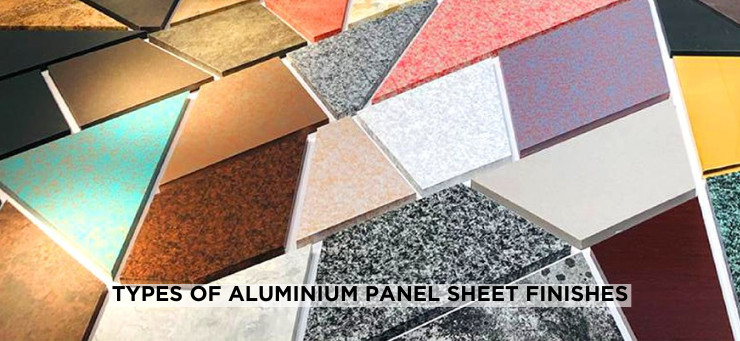Top 10 Uses of Aluminium Panel Sheet in Architecture
A true favourite for modern-day builders and architects, aluminium composite panels have quickly become popular in the construction industry. Durable, lightweight, and available in versatile appearances, ACPs are widely used for several purposes in the construction industry.
An aluminium panel sheet is available in hundreds of colours, textures, and patterns, which gives a plethora of design options to choose from. However, these materials are not confined to beautifying architecture. Take a look at the top 10 uses of ACPs in today’s times.
Aluminium composite panels (ACP) are widely used in architecture due to their durability, versatility, and aesthetic appeal. Here are the five top uses of aluminium composite panels in architecture:
Exterior Cladding: Perhaps the most common use of ACPs is exterior cladding. Being exceptionally strong and lightweight, most builders today will choose an aluminium panel sheet instead of traditional cladding material. These panels not only provide a modern and sleek look, but also can mimic different natural textures like metal, wood, and marble, without being heavy or prone to weathering.
Interior Design: Apart from exterior cladding, ACPs are increasingly being used for interior decoration too. Since they are available in different thicknesses, the minimum thicknesses such as 3mm are used for interiors. Again, their variety in appearance makes them suitable for being used as attractive wall decoration, false ceilings, and even furniture in commercial and residential buildings.
Signage: ACPs are widely used to create high-quality, durable, and eye-catching signages. Thanks to their ability to be able to be cut and shaped into different shapes and sizes. This allows them to be designed into unique and creative shapes, depending on the requirements. Besides, an aluminium panel sheet is also weather and scratch resistant, which makes them suitable for exterior applications.
Canopies and Awnings: Commonly spotted outside stores, canopies and awnings also employ the ACPs. They are ideal since they are low in weight, easy to install, as well as require minimum maintenance. As a result, these materials are preferred for their low cost and low maintenance features.
Sustainable Design: Some architectures may have installations, which is what ACPs help with. Aluminium composite panels are used for sustainable design in architecture. They are recyclable and energy-efficient, which makes them a sustainable choice for such installations. Keeping energy efficiency in mind, ACPs are also used as insulation material, which can help reduce energy consumption and carbon emissions in buildings.
Roofing: Many builders trust ACPs to create roofings for buildings. An aluminium panel sheet is durable, weather-resistant, and impact-resistant as well as can be customised to be fire-retardant. All these factors combined, these materials make fantastic roofing material.
Kitchen and Bathroom Design: Aluminium Composite Panels are used in designing kitchens and bathrooms due to their waterproof and stain-resistant nature. They are well suited for creating countertops, backsplashes, and cabinet covers that require durability and resistance to moisture.
Column Covers: In commercial buildings, ACPs are used as column covers to enhance the visual appearance of building columns. They can be cut, shaped, and moulded to fit the exact specifications of a building column to conceal the otherwise dull finish.
Acoustic Solutions: An aluminium panel sheet has excellent acoustic or sound insulation properties. This is why they are used as acoustic solutions in buildings, particularly in concert halls, recording studios, and theatres. The panels can be designed to absorb or reflect sound, providing an ideal acoustic environment for the space.
Retail Design: ACPs are commonly used in the retail design industry to create eye-catching and modern storefronts. The panels can be cut and shaped to create unique and creative designs that can attract customers and increase footfall.
Conclusion
An aluminium panel sheet has become an essential material in modern architecture, providing a range of benefits for architects and builders alike. From enhancing the aesthetic appeal of buildings to improving their functionality and durability, aluminium composite panels offer a versatile and cost-effective solution for various applications in the construction industry.
Whether it is for cladding, roofing, signage, or insulation, aluminium composite panels offer a range of advantages. The long list of advantages truly has changed the architecture construction industry. With the increasing focus on sustainable and eco-friendly architecture, aluminium composite panels are here to stay!




Comments
Post a Comment